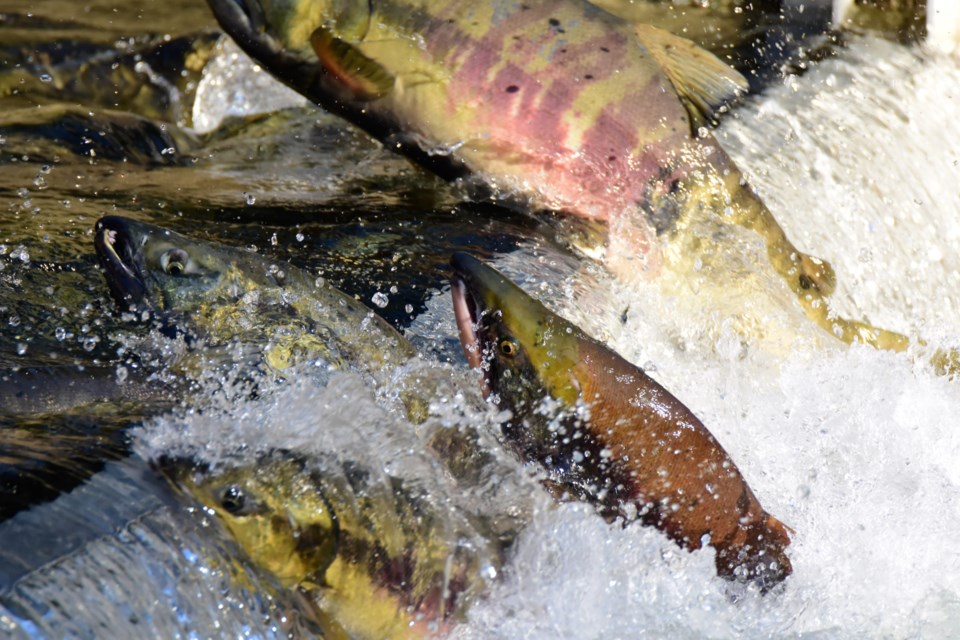British Columbia may have just witnessed the worst season ever for the province’s salmon fishery. The commercial fishing industry is in a state of turmoil, as both the short- and long-term future for those involved raises more questions than answers.
“There are certainly pressures out there…things that are affecting the returns of fish that we don’t fully understand at this point,” laments Jennifer Nener, Director of Salmon Management at Fisheries and Oceans Canada.
Nener says that while federal fisheries officials aren’t expected to release their 2020 spawning forecast until February, the initial indicators are anything but promising.
“I don’t have a crystal ball, but certainly this past year wasn’t a positive sign,” says Nener, pointing out that only 500,000 Sockeye returned to spawning grounds this past year – an order of magnitude less than the 5,000,000 expected.
So why are the spawning numbers so low? While many in the fishing industry are quick to blame climate change, habitat destruction, and overfishing, Department of Fisheries and Oceans (DFO) biologist Sue Grant is more pointed:
“Blame the blob.”
Grant uses the term to explain the general impact of a huge area of abnormally warm Pacific Ocean water stretching from Oregon to Alaska. Grant notes that while the so-called “blob” was showing signs of dissipating in 2017-2018 after first developing in 2015, a new “blob” has recently formed, with water temperatures nearly four degrees warmer than usual.
DFO scientists note that those temperatures are affecting the base of the food web by reducing the fat reserves of zooplankton, a key food source for salmon.
“We normally have larger zooplankton…but in warmer water they are smaller with low fat reserves,” explains Grant.
With hungry sockeye basically on a diet, Grant predicts that current generations of salmon will suffer:
“This newest warming will no doubt playout again in the future.”
There is, however, a flicker of hope for B.C.’s fishers; just maybe, pessimistic DFO scientists could be wrong.
“The thing about Fraser sockeye is they do surprise us,” quips Grant, who also serves as the Federal Fisheries and Oceans State of the Salmon Program Head.
While 2009 was among the lowest returns on record, Grant recalls that 2010 saw a complete turnaround, as 30,000,000 Sockeye returned to B.C.’s rivers and streams to spawn. Sadly, the returns have declined ever since, with 20,000,000 in 2014 and just 10,000,000 in 2018. Suffice it to say, fisheries officials are nervously anticipating the next dominant return in 2022.
While DFO officials note that salmon populations in the north appear to be doing better, Grant says recent observations offer clues about the future.
“It might be that the landscape just looks different going forward and we have to be prepared for that,” she stresses.
With many B.C. fisherman describing the latest salmon season as horrible, Nener acknowledges that DFO management measures have caused economic challenges for the entire industry. She also warns that conservation measures will likely need to be in place for several years to come. In other words, get used to it!
“Without question, there is a lot of uncertainty going forward,” concedes Grant. “We have to be thinking about what adaptations we do now to make sure that our fish habitats are the best they can be.”
Asked to sum up the current state of British Columbia’s once robust salmon fishing industry, Grant’s response is blunt: “The past is no longer the future.”
As always, I welcome your comments and criticism on Twitter @kammornanchor and email [email protected].
Bob Price is a veteran B.C. broadcaster who anchored the morning news on CHNL radio in Kamloops for the past 30 years. Bob is also a past Webster Award winner whose previous stops included Vancouver and Calgary.
SWIM ON:
- Last week, Bob Price looked at BC's bear problem - which isn't a bear problem at all, but an education problem.
- Ada Slivinski: how do customers measure the green-ness (that's totally a word) of a given business?
- Roslyn Kunin on a national food policy, and the role it could potentially play.



